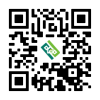PELATIHAN NGAPSAHI KITAB TURATS DENGAN MENGGUNAKAN METODE AMTSILATI TASRIFIYAH BAGI MAHASISWA PBA UIN K.H. ABDURRAHMAN WAHID PEKALONGAN
Keywords:
Reading turats book, Shorof, Amtsilati Tasrifiyah, Service Learning.Abstract
This community service aims to improve students' ability to understand the yellow book, especially in the science of word changes (shorof). This community service uses a qualitative method with a Service Learning (SL) approach through observation, interviews, and documentation. The results of the community service show that this training is effective in improving participants' understanding of word changes in Arabic. The systematic and practical Amtsilati Tasrifiyah method makes it easier for participants, especially those who do not have a basic Arabic language, to learn and apply the science of shorof in reading the yellow book. This training also plays an important role in preserving the tradition of Islamic knowledge for PBA students of UIN K.H. Abdurrahman Wahid Pekalongan.
References
Al-Jurjani, A. (2010). Sharh al-Tasrif al-‘Izzi. Beirut: Dar al-Kutub al-‘Ilmiyah.
Bringle, R. G., & Hatcher, J. A. (1995). A Service-Learning Curriculum for Faculty. Michigan Journal of Community Service Learning, 2(1), 112-122.
Creswell, J.W. (2014). Research Design: Qualitative, Quantitative, and Mixed Methods Approaches. Sage Publications.
Fathurahman, O. (2012). Kitab Kuning, Pesantren dan Tarekat: Tradisi dan Inovasi dalam Islam Nusantara. Jakarta: Gramedia.
Hall, T. (2002). Differentiated Instruction: Effective Classroom Practices Report. National Center on Accessing the General Curriculum.
Hasan, N. (2010). Education, Religion, and the Modernity of Tradition in Indonesian Islam.
Laffan, M. (2011). The Makings of Indonesian Islam: Orientalism and the Narration of a Sufi Past.
Miles, M.B., & Huberman, A.M. (1994). Qualitative Data Analysis: An Expanded Sourcebook. Sage Publications.
Moleong, L.J. (2006). Metodologi Penelitian Kualitatif. Bandung: Remaja Rosdakarya.
Musthafa, A. (2011). Pengantar Studi Ilmu Shorof. Bandung: Mizan.
Ormrod, J. E. (2016). Human Learning (7th ed.). Pearson Education.
Sugiyono. (2011). Metode Penelitian Pendidikan Pendekatan Kuantitatif, Kualitatif, dan R&D. Alfabeta.
Tinto, V. (1997). Classrooms as Communities: Exploring the Educational Character of Student Persistence. Journal of Higher Education, 68(6), 599–623.
Tomlinson, C. A. (2001). How to Differentiate Instruction in Mixed-Ability Classrooms. ASCD.
Vygotsky, L. S. (1978). Mind in Society: The Development of Higher Psychological Processes. Harvard University Press.
Zarkasyi, M. (2009). Metode Amtsilati: Pembelajaran Shorof di Pesantren. Kudus: Pustaka Santri.
Downloads
Published
How to Cite
Issue
Section
License
Copyright (c) 2024 PROSINA PPG : Prosiding Nasional Pendidikan Profesi Guru

This work is licensed under a Creative Commons Attribution 4.0 International License.









